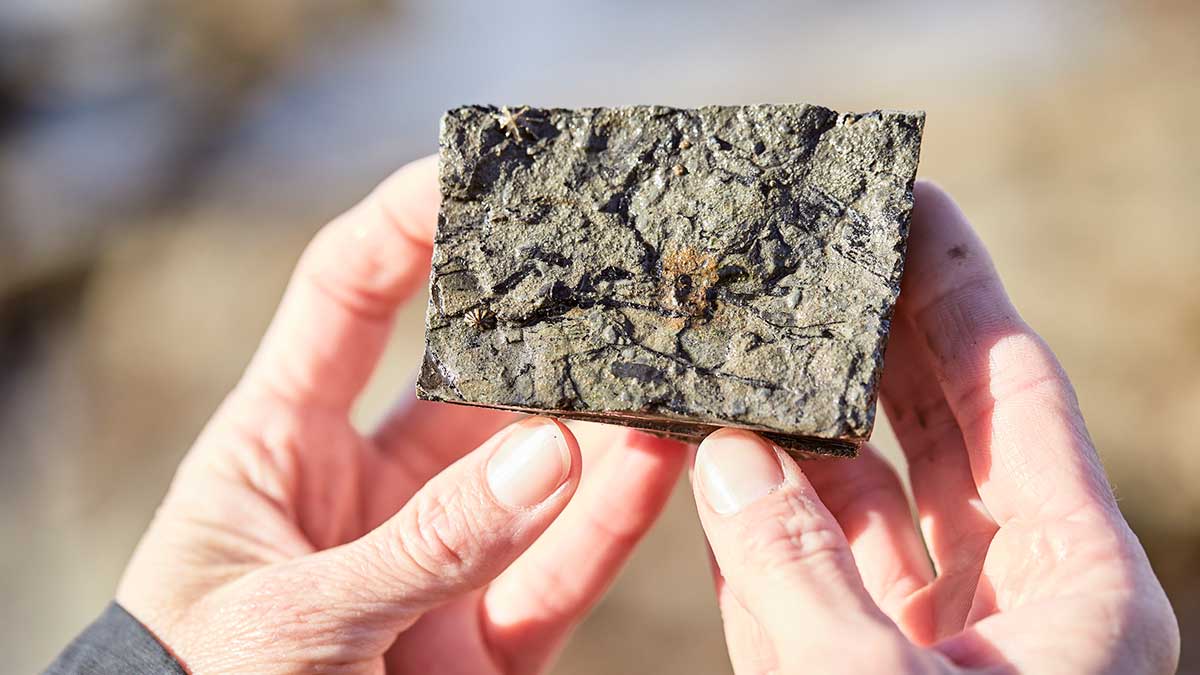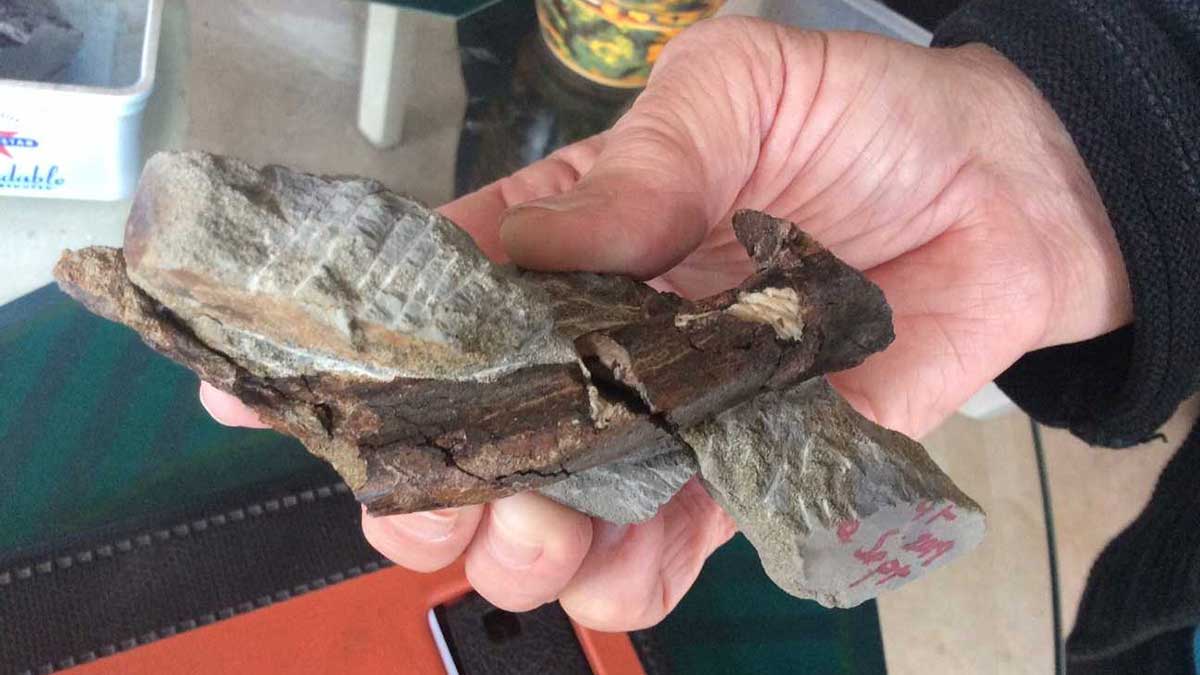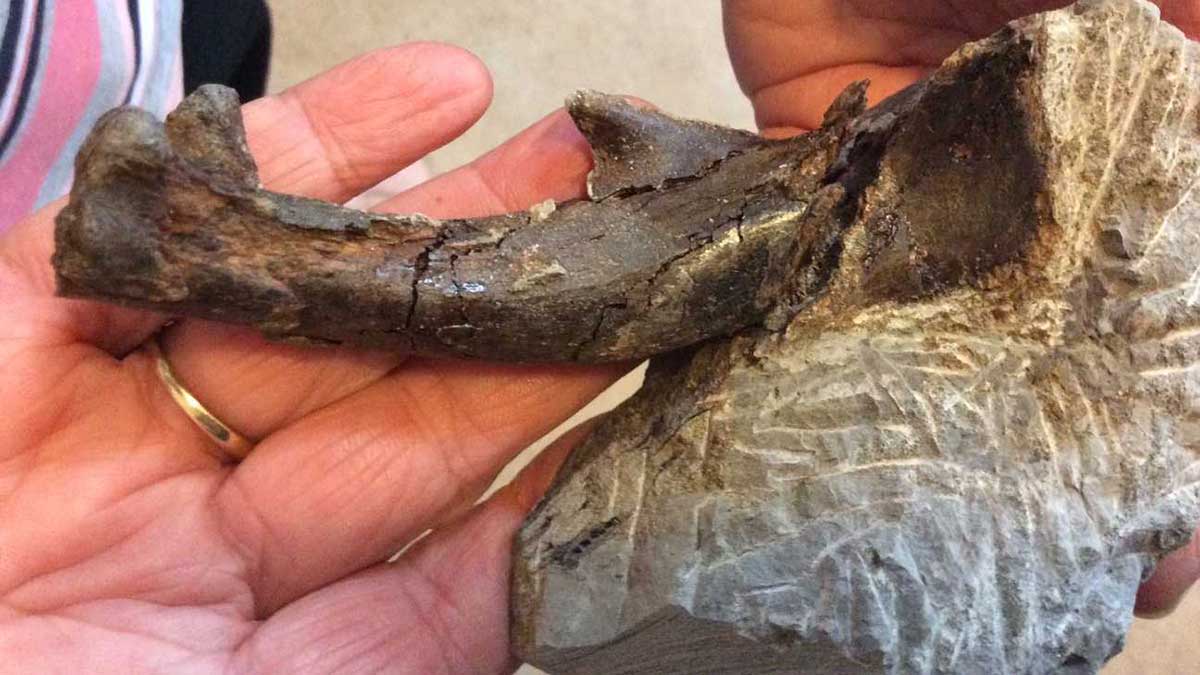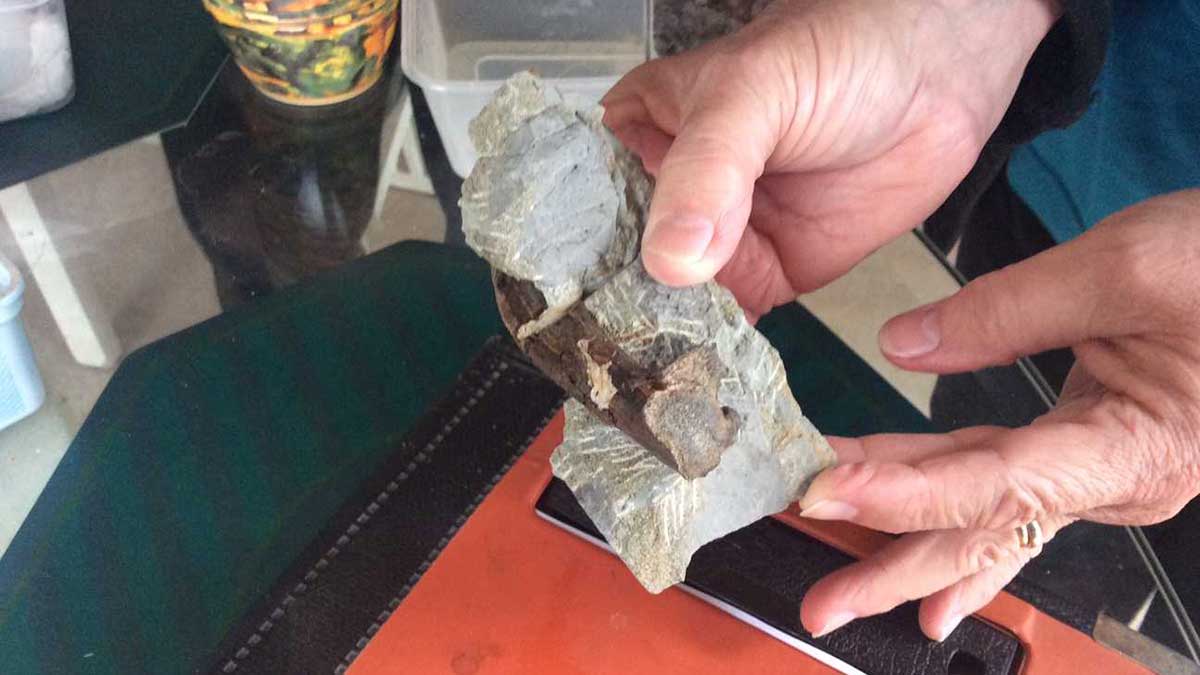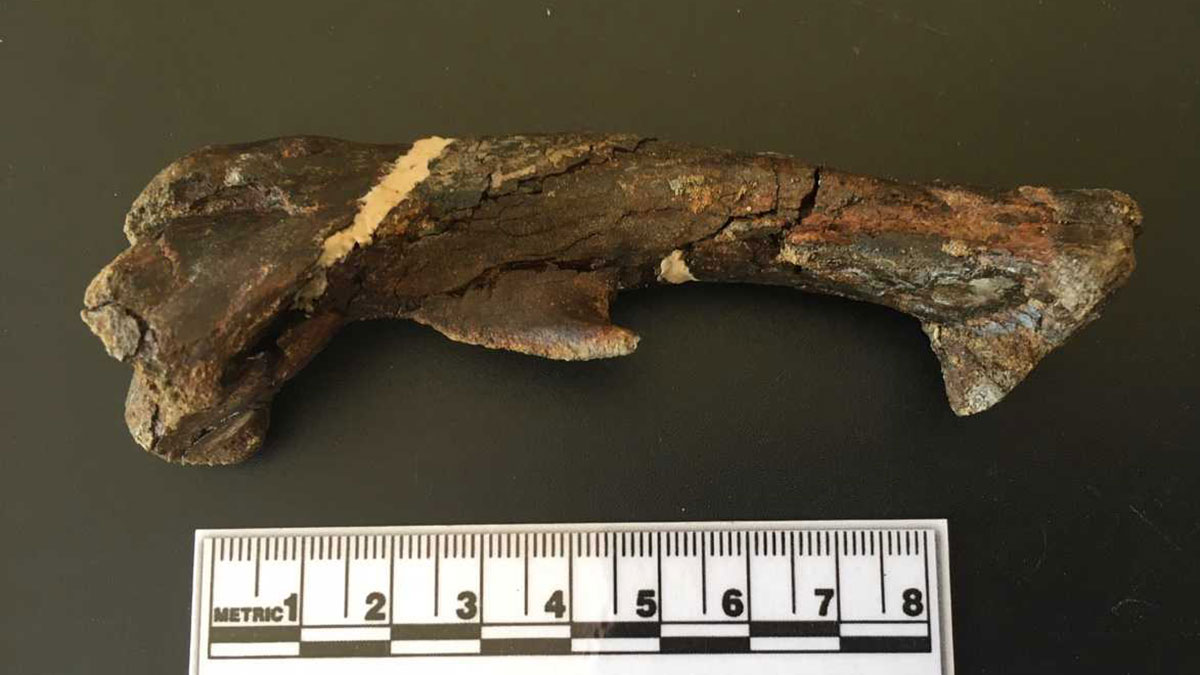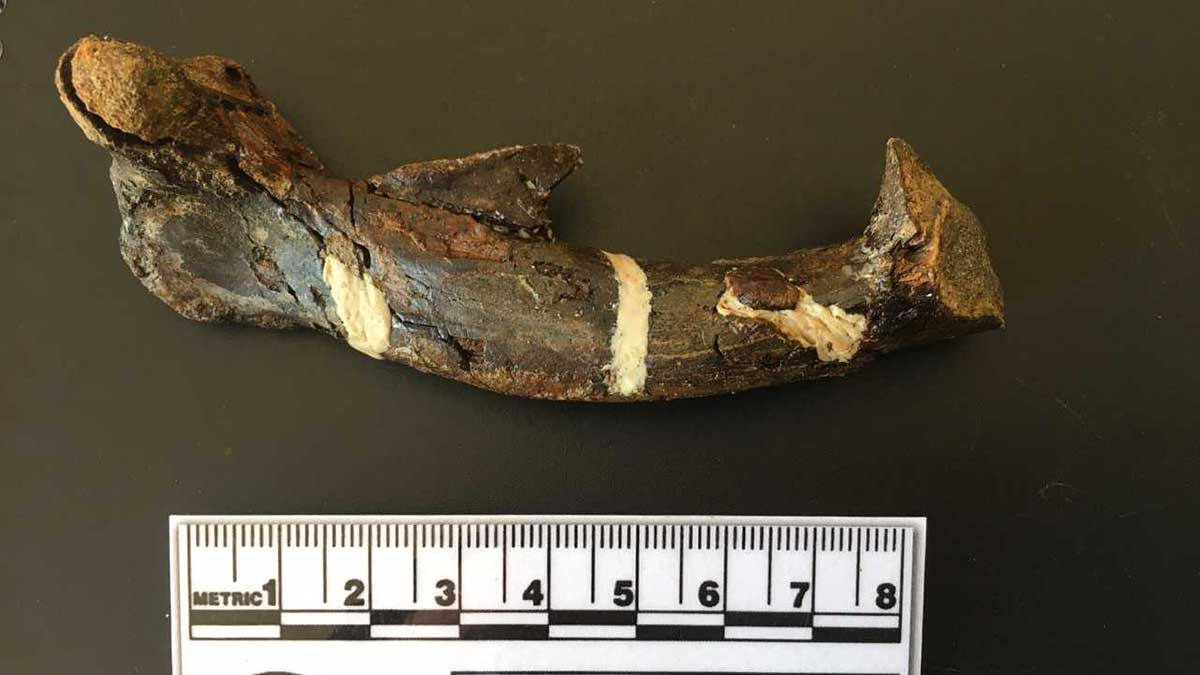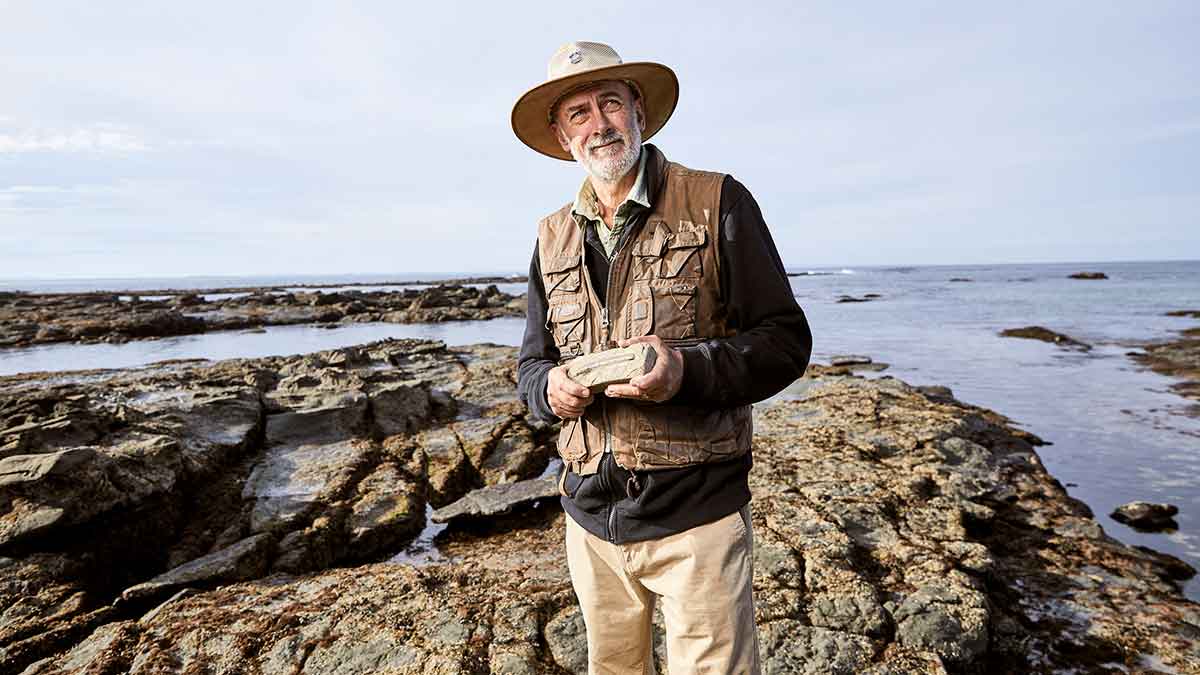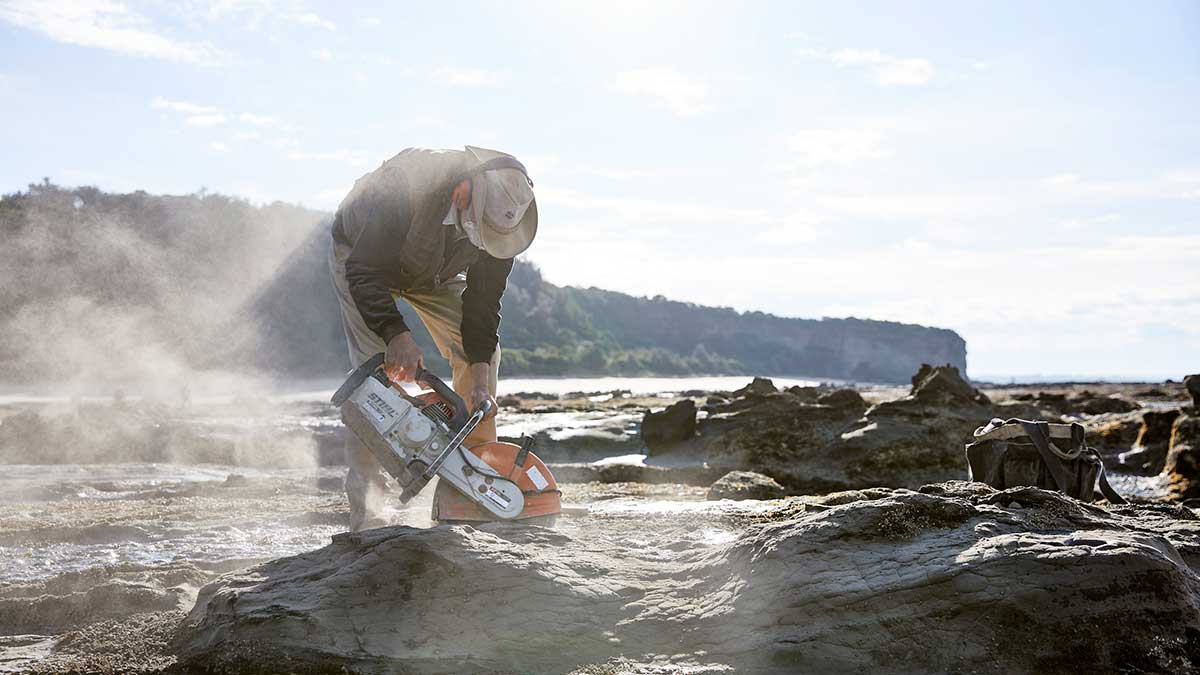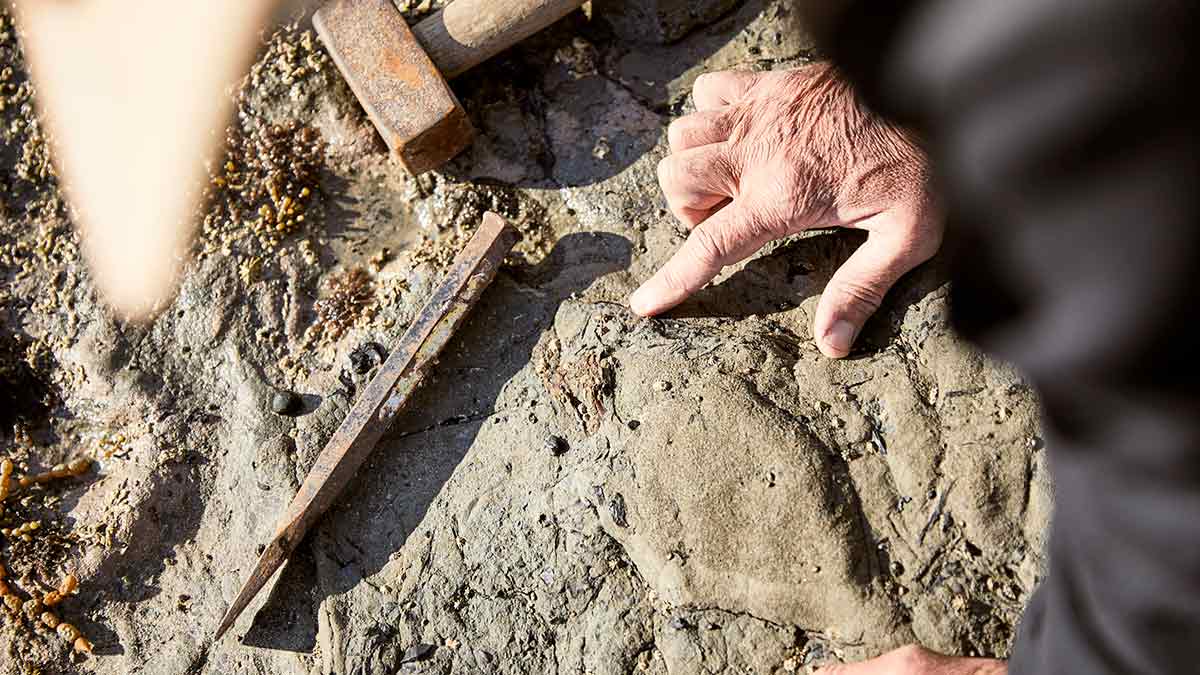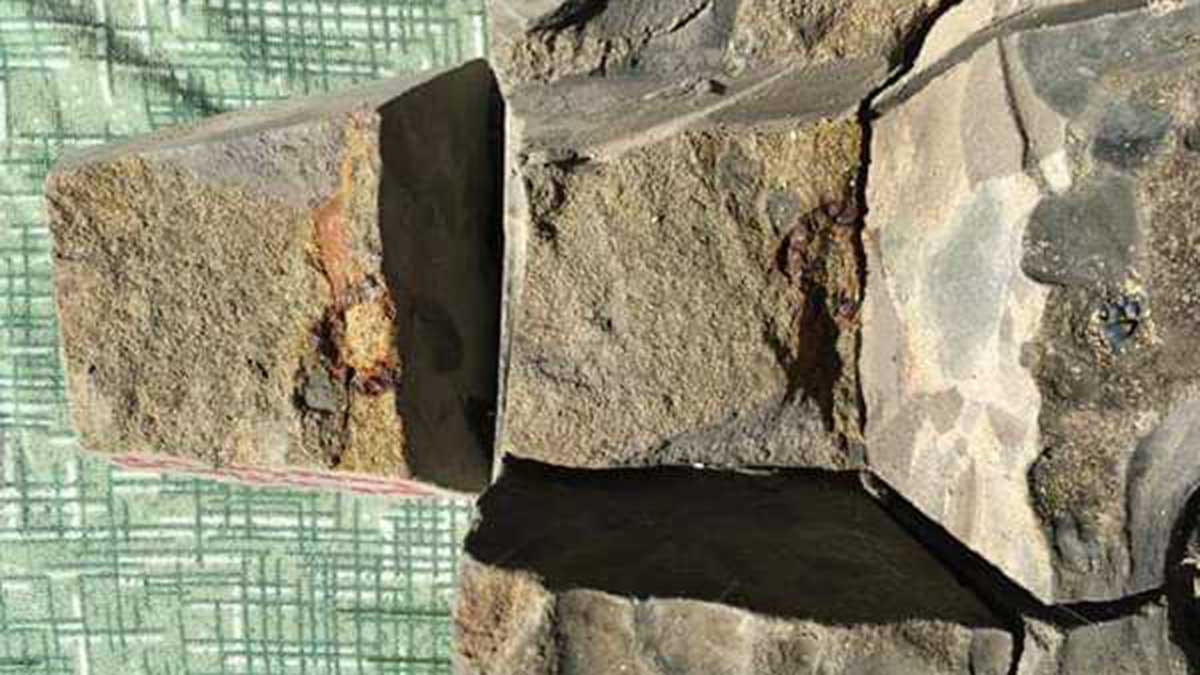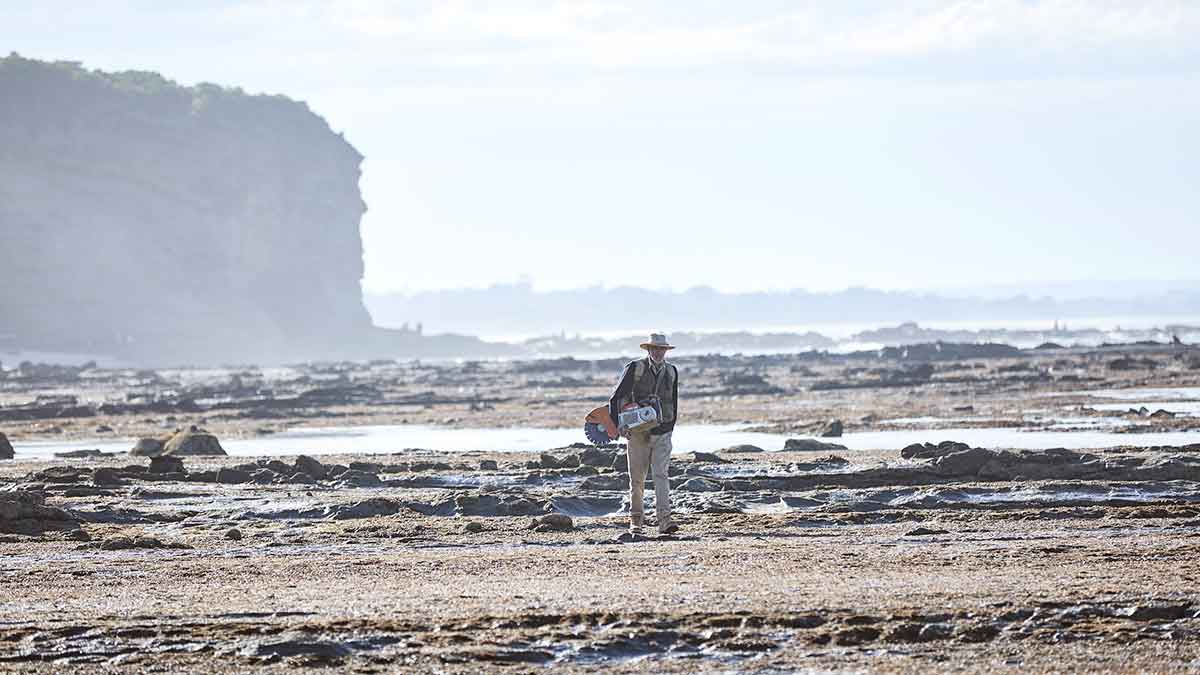A guide to the best and most budget-friendly activities to do over the summer school holidays in Melbourne and Victoria.
Searching for the dinosaurs that roamed Victoria

A close encounter of the dinosaur kind was the last thing Darren Bonnici expected when he signed up for a post-workshop beach ramble at a conference in Inverloch.
“We had the choice of I think it was gin and yoga, or a nature walk, so I chose the nerdier option,” explains Darren. Half an hour into a paleontology walk-and-talk on the rocky foreshore close to RACV Inverloch Resort with guide Mike Cleeland, Darren struck pay dirt.
“I was really intrigued thinking, ‘I’m gonna find a fossil today’ – yeah right. I was milling around when I saw kind of a circular brown patch in the rock and thought, what are the chances? So I called Mike over to have a look…and he says, ‘this actually might be something’ ".
The pair kept in touch over the following months as that 'something' was cut out of the rock, then painstakingly extracted from its surroundings to reveal the fossilised leg bone of a 125-million-year-old dinosaur.
“Mike said it was most likely from the bi-pedal herbivore qantasaurus, but then he said the femur was unusually short and stocky for a dinosaur of those types, so it could be something new entirely. I was thinking Bonnicisaurus.”
In the meantime, Darren is still marvelling that he could spot a fossil so easily, and just an hour or so from home. “You hear about fossil discoveries and they’re always somewhere else in the world, you know, like some marshland in Germany. I didn’t have a clue this was on the doorstep.”
The lost world found in Victoria
Extraordinary as Darren’s find might sound, it actually isn’t. More than 20,000 significant fossils have been unearthed around Inverloch in the last 40 years. And while Mike says that recent foreshore erosion around Inverloch is worrying, its silver lining is a “bonanza” of fossil finds.
“Sand erosion has moved sand from the west end of the beach down to the east and it’s exposed a whole lot of new bones that have never been seen before,” says the palaeontologist and geologist, “plus ongoing erosion of the surface of the rock exposes new bones now and then”.
Inverloch, says Mike, is “ground zero” for Victorian and Australian dinosaurs, with the first-ever find of an Australian dinosaur bone – the Cape Paterson Claw – at Eagles Nest in 1903. Over 75 years later, university students Tim Flannery and John Long found bones there too, reigniting a ‘dinosaur rush’ that has ranged across the Bass Coast ever since.
“Inverloch is one of few places in Australia where you do have a chance, however small, of actually finding a real fossil,” says Mike.
A new hobby for dinosaur lovers takes off
The relatively recent fossil-fuelled fascination with the area encouraged the Bass Coast Shire to announce plans for a 50-kilometre-long dinosaur-themed walking trail complete with dinosaur statues, palaeoart, sound-and-light shows and a museum. It’s set to run from San Remo to Inverloch, the centre of dinosaur knowledge in the region.
Just two kilometres east of Eagles Nest is Flat Rocks, where Darren found his femur. It looks like any other beach - sand draping a flat, rocky area dotted with rock pools at low tide. But in an ancient former life, this was a riverbed holding the dismembered remains of fish, mammals and dinosaurs sluiced in during raging floods.
And in that former life, this ‘Victorian’ floodplain sat near the South Pole, part of the southern landmass of Gondwanaland. Wet, cold and dark for months at a time, the polar edges of this ‘lost world’ were nevertheless alive with now-extinct creatures.
On a sunny Sunday afternoon, we go in search of them, hopping between rockpools on Mike’s Dinosaur Discovery tour with the Bunurong Environment Centre. He shapes the tour as a dinosaur hunt, and has us in the palm of his hand with the smarts and wit of the science teacher he used to be.
We search for and find the raised footprint of a dinosaur (or two) set in the rock – there are four toes rather than three, so this is one print on top of another. A vandal has knocked the top off two of the toes, but it’s still clearly visible. And Mike reckons that with a dig permit, there’s a 70 per cent chance of finding a whole row of footprints underneath. Then we go free-range, looking for the colour variation that landed Darren his femur.
“I think people are attracted to dinosaurs for the same reason they’re attracted to lions and tigers,” says Mike, “because we like top predators.”
He should know, he found one himself 30 years ago at San Remo – the jawbones of a giant carnivorous amphibian. Koolasuchus cleelandii – “imagine a Mexican walking fish the size of a crocodile” – is named after him and technician Leslie Kool, who worked for three months to extract the two enormous jaws from the block of rock that came to her lab.
It was a top river predator of the Cretaceous period, and you’ll find a life-size concrete replica at Inverloch’s Wallace Reserve. We come here at the end of Mike’s tour, to sit on concrete Koolasuchus in the sun and hammer away at bucketloads of rock fished out of a subdivision at Wonthaggi.
Our orders are to “get a rock and make it smaller” so we do, turning up not dinosaurs but fragments of the leaves and ferns that fed them. And we’re more than rapt to take home a two-centimetre-long chunk of sandstone displaying a stripe of 125-million-year-old “top-quality dinosaur food.”
Where to find a fossil in Victoria
Take the tour
Join one of Mike Cleeland’s Dinosaur Discovery tours which set off from Inverloch’s Bunurong Environment Centre, where he is an education officer.
Look yourself
Dinosaur fossils around Inverloch can be tricky to find because they’re often small and difficult to distinguish from the surrounding rock. Look at low tide at Flat Rocks, three kilometres from Inverloch, when the rocks on the shore platforms are exposed. Bones are often brown and show the smooth shaft exterior or spongy bone marrow. If you find something, leave it in situ, take a photo and send it to Mike or the Melbourne Museum. And remember where it is.
Best foot forward
Keep your eyes peeled for the dinosaur footprint on the shore platform about 100 metres north of the stairs at The Caves, six kilometres from Inverloch. Another dinosaur fossil site at Cape Otway is remote, with little to see unless there’s a dig operating.
Bayside
For something a little more modern, Melbourne’s bayside suburbs are home to fossils of prehistoric sharks, whales and other sea creatures from five to six million years ago. Finds include evidence of giant sharks and birds with a wingspan up to 10 metres. Digging for fossils is prohibited, but you can join Melbourne Museum expeditions.

Will you find an artifact on the dinosaur coast from one of these reptiles that roamed the state millions of years ago?
5 dinosaurs that roamed Victoria
Australovenator wintonensis
- Type: Carnivorous theropod
- Size: 1.6 metres tall at hips, five to six metres long
- Fossils found: A claw near Cape Otway
- Australovenator was a fast-running three-toed dinosaur with three fingers, each bearing a wickedly curved claw
Qantassaurus intrepidus
- Type: Ornithopod (herbivorous)
- Size: One metre tall, 1.8 metres long
- Fossils found: At Flat Rocks near Inverloch in 1996
- Named after the airline, Qantassaurus was one of the small ornithopods common in southern Victoria and may have travelled in flocks and hibernated in burrows. Fossils of this species have been found only in Inverloch
Koolasuchus cleelandi
- Type: Carnivorous amphibian
- Size: Three to five metres long
- Fossils found: San Remo
- Koolasuchus lived mostly in water and ate fish, but may have also dined on small dinosaurs that strayed too close
Minmi paravertebra
- Type: Ankylosaur (herbivorous)
- Size: 2.5 to three metres long, less than one metre tall
- Fossils found: Kilcunda and Inverloch
- Armour-plated Minmi was equipped to resist attack from larger carnivores, while its long legs may have made it a fast runner
Galleonosaurus dorisae
- Type: Ornithopod (herbivorous)
- Size: One to two metres
- Fossils found: Flat Rocks near Inverloch
- Galleonosaurus, roughly the size of a wallaby and with powerful hind legs, was identified only in 2019. Fossils of this species have been found only in Inverloch
